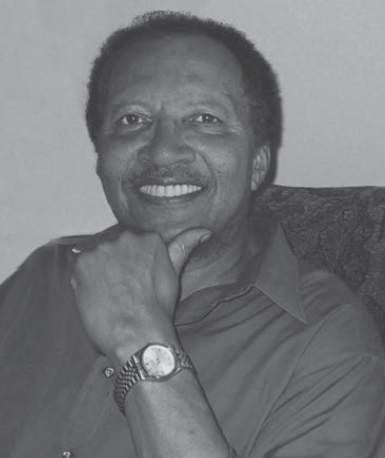ALAN v42n2 - From the Editors Race Matters: The Presence and Representation of Authors and Characters of Color in YA Literature
From the Editors Race Matters: The Presence and Representation of Authors and Characters of Color in YA Literature

“There’s really no such thing as the ‘voiceless.’
There are only the deliberately silenced, or the preferably unheard.” (
Arundhati Roy
)
Statistics suggest that, by 2019, approximately 49% of students enrolled in US public schools will be Latina/o, Black, Asian/Pacific Island, or American Indian ( Hussar & Bailey, 2011 ). However, the field has been increasingly criticized for not reflecting these demographics in the literature published for young adult readers. For readers of color, this can result in a sense of disconnect between lived reality and what is described on the page. For readers from the dominant culture, this can result in a limited perception of reality and affirmation of a singular way of knowing and doing and being. For all readers, exposure to a variety of ethnically unfamiliar literature can encourage critical reading of text and world, recognition of the limitations of depending upon mainstream depictions of people and their experiences, and the building of background knowledge and expansion of worldview.
In this issue, we share experiences, challenges, hesitations, and successes in using or promoting young adult literature that features characters and/ or authors of color. We are invited into classrooms, libraries, and school communities to better understand the potential value and necessity of broadening the texts we use to capture the imaginations of all readers.
We are grateful to share Arnold Adoff’s powerful poem “of course . . .” as our opening piece because it reminds us that words can inspire revolution and urges us to remember that “the noise of that/ story and the shout of that song/ must always be louder than the/ silence of the bullets and the/ silent deaths of grim despair.”
“Race Matters: A Collaborative Conversation” features a memorable written dialogue between several YA authors who have addressed explicitly issues of race in their presentations and writings: Coe Booth, Matt de la Peña, Walter Dean Myers, Cynthia Leitich Smith, and Gene Luen Yang.
In “Expanding the Canon: Classic African American Young Adult Literature,” Wanda M. Brooks and Jonda C. McNair examine the term “classic” and draw upon the expertise of highly regarded scholars and scholarship to define and discuss representative titles of classic African American texts intended for youth.
In their article, “Contextualizing Metaphors of Literacy in Young Adult Literature (2000–2013),” Kristine Gritter, Xu Bain, and Kristi Kanehen use Scribner’s literacy metaphors, as well as four of their own, to examine the literacy practices of adolescent and adult protagonists in recent award-winning literature. Their study leads to assertions about how literacy in important cultural texts is situated ideologically by gender and ethnicity.
In “Reading YA with ‘Dark Brown Skin’: Race, Community, and Rue’s Uprising,” Antero Garcia and Marcelle Haddix explore the relationship between printed text and electronic forms to argue that transmedia and online fandom create rich ecologies and sites of connected learning tied to YAL that, in the context of race, can be both liberating and reifying of assumptions regarding racial identity. They explore, in particular, how YAL acts as a portal for critical civic learning about race in today’s digital spaces.
Emily Wender (“Felt Tensions: Preservice Teachers Read Sherman Alexie’s An Absolutely True Diary of a Part-Time Indian ”), Chonika Coleman-King and Susan L. Groenke (“Enhancing Antiracist Teacher Education: Critical Witnessing through Pairing YA Literature and Adult Nonfiction”), and Brandon Sams and Kate R. Allman (“Complicating Race: Representation and Resistance Using Arab and Asian American Immigrant Fictions”) examine implications for using multicultural literature in the education of preservice teachers. Wender studies how dialogic journals might be used to motivate perspective taking in preservice teachers, allowing them to recognize and value tensions between their outlooks and those of the characters in Alexie’s novel. Coleman-King and Groenke engage students in the “literary truth” of fiction paired with the “literary and literal truth” of nonfiction to encourage critical witnessing in their antiracist work with preservice teachers. And Brandon Sams and Kate R. Allman explore how immigrant fictions can serve as powerful texts for disrupting dominant constructions of race for preservice English teachers while simultaneously fostering discussion around the importance of culturally responsive literature.
E. Sybil Durand and Patricia Hauschildt extend the conversation beyond US borders. In “Understanding Diversity in a Global Context: Preservice Teachers’ Encounters with Postcolonial Young Adult Literature,” Durand draws from a conversation in which five preservice teachers discuss the novel Now Is the Time for Running (Williams, 2011) to argue that reading and discussing postcolonial literature in a book club setting can provide valuable critical insights for future teachers as they reflect on similar local and national issues and as they prepare to teach in culturally diverse classrooms. And in “‘I loved this book, even though . . .’: Reading International Young Adult Literature,” Hauschildt describes her efforts to explore how her university students responded to international YAL, as readers and as future teachers, and compared their experiences with geographically unfamiliar texts to reading YAL set in the United States.
We’re proud to share the continued work of our columnists in this issue. “Book in Review: A Teaching Guide,” written by S. d. Collins and Rénard Harris, presents “Seriously, Can We Talk Laugh about Race? Voices from Open Mic .” Collins and Harris provide educators with teaching strategies for using Open Mic: Riffs on Life between Cultures in Ten Voices (Perkins, 2013), a collection of short stories written by various YA authors that explore what it means to grow up “between cultures.”
Our Right to Read column, “Asking Questions, Seeking Answers, Challenging Assumptions,” features Karin Perry and James Bucky Carter together with Teri Lesesne. Perry defines and considers the negative implications of gatekeeping practices that result in self-censorship and ultimately deny readers access. Carter examines race in comic books to challenge perceptions of readership and promote comics as a democratic medium.
Susan L. Groenke and Judson Laughter’s Layered Literacies column “Reading, Race, and Responsibility” discusses and provides important resources to help teachers break the silence about race and reclaim their classrooms as the “public raced space[s]” they are.
We conclude this issue with Lisa Yee’s “A Rambling Rant about Race and Writing” in which the YA author provides personal, candid, inspiring reflections on the We Need Diverse Books campaign and offers a call to action for educators, librarians, authors, and publishers.
As an additional resource for readers, we also want to give a shout-out to the Children’s Book Council. The organization’s Diversity Initiative “advocates for an inclusive and representative children’s book publishing industry” ( http://www.cbcbooks.org/about/cbc-diversity-events/ ). A related newsletter, “Diversity in the News,” gathers and shares relevant happenings in children’s books and diversity. You can read current and past issues (and subscribe) here: http://www.cbcbooks.org/diversity-in-the-news-august-2014/#.VBxtl-dtliw .
As you read the pieces featured in this issue, we encourage you to ponder Jacqueline Woodson’s words, “Someday somebody’s going to come along and knock this old fence down” ( The Other Side , p.32 ). What might you do to give that fence a nudge?
References
Hussar, W. J., & Bailey, T. M. (2011). Projections of education statistics to 2019 . National Center for Education Statistics, 2011-017, US Department of Education. Retrieved from http://nces.ed.gov/pubsearch/pubsinfo.asp?pubid=2011017 .
Roy, A. (2004, November). Peace and the new corporate liberation theology . Speech presented at the Sydney Peace Prize Lecture, University of Sydney, Australia. Retrieved from http://www.smh.com.au/news/Opinion/Roys-fullspeech/2004/11/04/1099362264349.html .
Woodson, J. (2001). The other side (E. B. White, Illus.). New York, NY: Putnam.
This issue of
The ALAN Review
is
dedicated to the life and work of
Walter Dean Myers.
(1937–2014)

"We need to tell young people that America was built by men
and women of all colors and that the future of this country is
dependent on the participation of all of our citizens."
|
A POEM TO COMMEMORATE
|
|
of course:
t r u e change is always too slow and o u r b e s t hopes rest with |
|
s t e a d y
on |
|
beyond our own times
the t r u e revolutions h a p p e n within the covers of our best books inside the noises of words with words inside the movements of reading eyes so: the writers are the engines the artists are the engines and the women and men and the girls and the boys reading those noisy books all are engines of true change the words contain the power and the books must have that power and the noise of that story and the shout of that song must always be louder than the silence of the bullets and the silent deaths of grim despair we m o v e forward with love the s t r u g g l e c o n t i n u e s a r n o l d a d o f f |
Copyright ©2015 The Arnold Adoff Revocable
Living Trust. Used by Permission of Arnold Adoff
by EMW